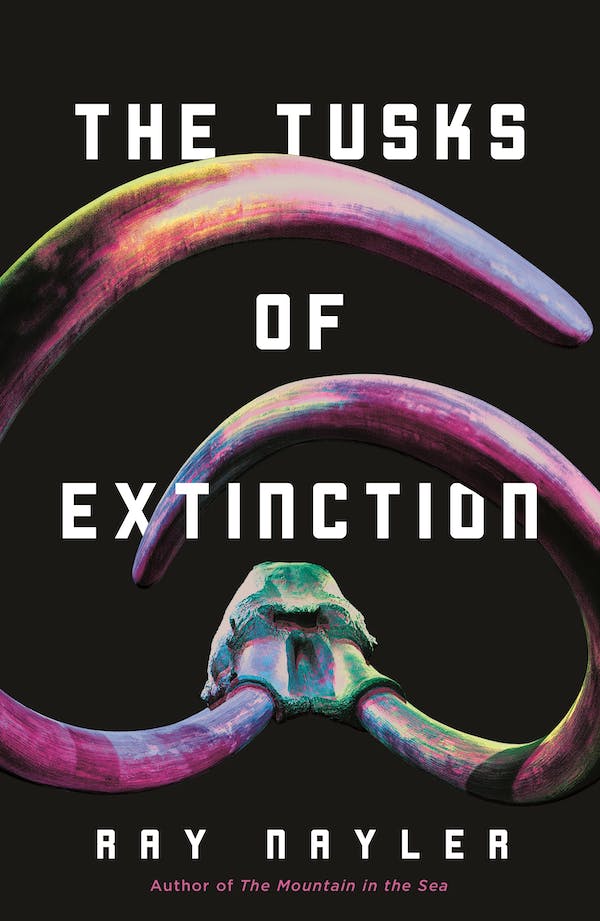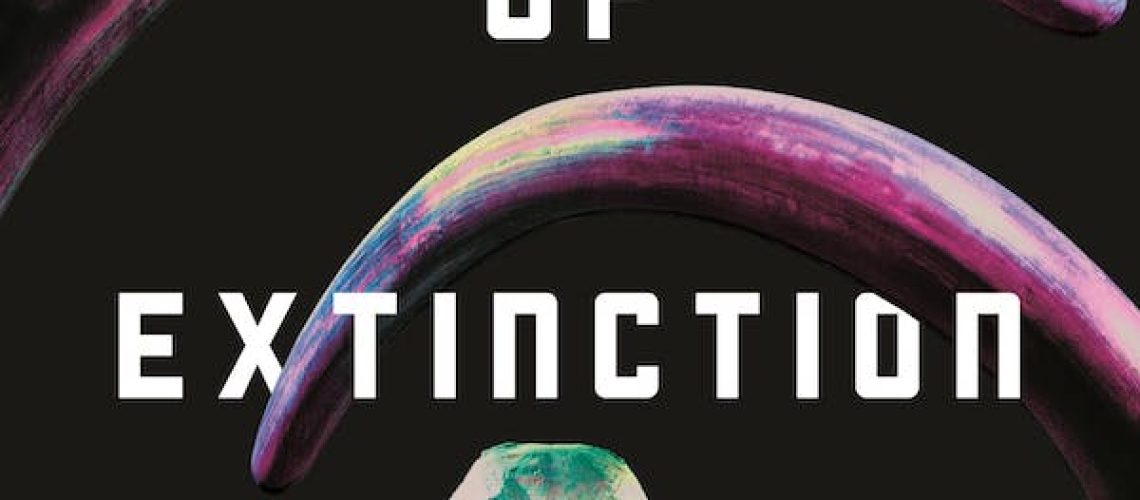I’ve greatly enjoyed Ray Nayler’s short fiction throughout the major genre publications, and his debut novel in 2022, The Mountain in the Sea, was certainly in my top three reads of that year. That novel won a Locus award, and in my opinion should have won more, and gained wider attention. I feel guilty on this, as it slipped through my review schedule, but I still do want to get a review up for it for any who may have missed it. Seeing the new release of a Tordotcom novella from Nayler, The Tusks of Extinction, I wanted to ensure I at least covered that in a timely matter.

Any of Nayler’s existing fans should be equally pleased with The Tusks of Extinction as with his past work. For those less familiar, Nayler’s writing often touches on speculative elements of biology and technology, with ecological themes and political conflicts underlying the plots of his stories. His characters wrestle with social, economic, and moral ambiguities that arise from these matters, in deeply personal ways. This in a nutshell is what I appreciate and enjoy about Nayler’s work. It touches on big issues, features biological speculation that is near and dear to me, but it does all this without skimping on character-driven aspects and precise language that evokes empathy and reflection. Like the work of Atwood, it can pass as literary speculative fiction while also provide a captivating plot. The Tusks of Extinction continues this.
I’m going to eschew any traditional plot summary of Nayler’s new novella. Anyone demanding it could easily find it, but the title itself, and the book’s cover art, really should key readers in enough on what the story might involve. I’m not giving one because I dove into The Tusks of Extinction myself without reading anything on it (as I often do) and coming into it in ignorance I felt is actually a better (perhaps the only) way of capturing the stylistic effects of how Nayler constructs the novella, particularly its start where the reader cannot immediately be certain about the nature of the point-of-view character. Hints indicate one conclusion, but then a few paragraphs later there’s a detail that contradicts assumptions. The reader can form a hypothesis, but by the next chapter there’s a new point-of-view. Gradually, things become clarified.
This initial confusion parallels the confusion within the mind of the novella’s main protagonist, as the episodic chapters slowly coalesce into a clear story and denouement. With the relatively short length of The Tusks of Extinction, this structure perfectly captures and relays the state of the main character to the reader without pages of exposition being needed. However, the only flaw I do see in the book is that it still suffers from being novella length. The themes and cast of characters that The Tusks of Extinction follow really should have been explored as a longer novel. Developments, background, or explanations that really require a lot of attention and space to either be believable or to emotionally resonate with the reader become frequently condensed to just a couple scant pages. Nayler does admirably well with a lot of ambition. But I think it could have been a lot more. I’d love to see this expanded one day into that.
Conversely, details and side characters of the novella could have been cut to accomplish the same basic tale (and tackling the same broad themes) within a short story. The Tusks of Extinction ends up being a perfect example for why I find novellas generally unnecessary or incomplete. Nevertheless, there’s so much wonderful and of note in this particular story that I find it an overall success and enjoyment despite this flaw to my eye.
While I’m not going into the specifics of the plot and the nature of the characters in The Tusks of Extinction, I will close out with a quote from the novella that sums up the basic theme that it explores.
“… in Hong Kong everything was compressed, anonymous, tangled. Everything was the crowd, the mass…
“It was the way of life. The density of the population. And its lack of connection to nature. To anything outside of the endless canyons and towers of man.
“But after awhile, I began to see: Hong Kong, too was connected to nature… But what I saw, I did not love. It was connected to nature, but only to draw it into itself. To consume it. Hong Kong was a vortex: the ships came spiraling into the port from all over the world, dragged in by a tide of extraction, the cranes pulled containers off of vessels that were like enormous floating buildings, filled with everything the world had to offer. What I saw was a flow of things—manufactured things, yes. But also plants—vegetables, fruits form the mainland, from all over the world. Cut flowers even from my own country. Our coffee, too. But also—ivory.”
There’s a harshness and a melancholy to The Tusks of Extinction regarding human nature, our willful and selfish disconnect from our ecologies (even to our own harm), and a deep grief over what we have lost and likely will lose in the near future. It’s a painful read at times, but an important one. And even amidst the bouts of pessimism and sorrow, there’s a string of hope to grasp onto. A hope that some part of humanity, in one form or another, might act to be different.







